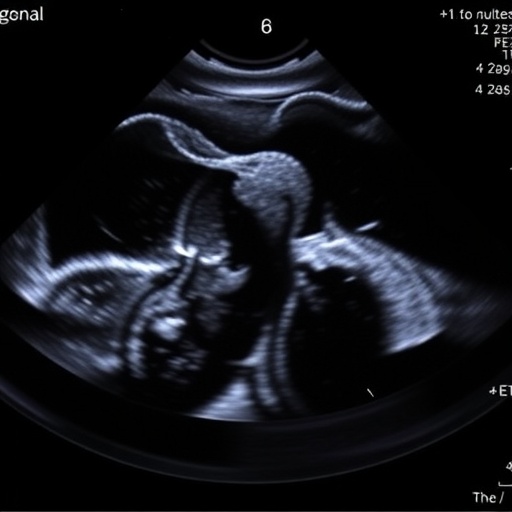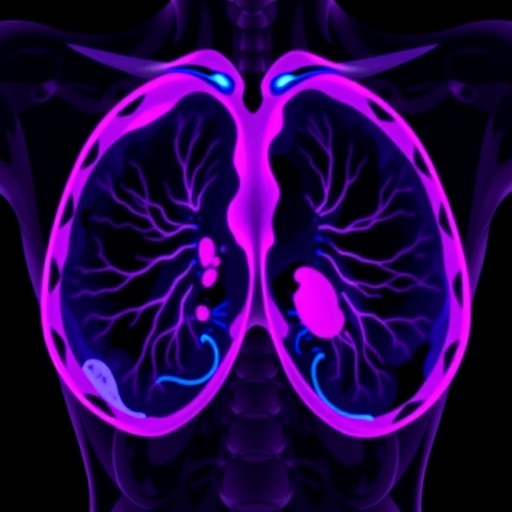In the heart of Bungoma County, Kenya, a significant challenge persists in the battle against childhood cancer: timely access to care. Despite an ambitious awareness campaign launched between January and June 2023, aimed at improving early diagnosis and intervention, new findings reveal that barriers to accessing cancer treatment for children remain formidable. This sobering reality comes to light through a comprehensive study that combined parental interviews and hospital registry data, shedding critical insights into the ongoing struggle faced by families and healthcare systems in resource-limited settings.
Cancer in children is a global health concern, with low- and middle-income countries (LMICs) disproportionately affected by delays in diagnosis and treatment. These delays often stem from multifaceted obstacles including socioeconomic, cultural, and infrastructural factors. The recent initiative in Bungoma County sought to mitigate these impediments by educating communities, healthcare workers, and policymakers on the urgency of early cancer detection. However, the study revealed that, despite these efforts, the campaign did not significantly alter the annual rate of childhood cancer diagnoses.
From January 2023 to December 2024, researchers conducted structured interviews with parents of all children newly diagnosed with cancer at Moi Teaching and Referral Hospital. This qualitative approach was paired with a rigorous quantitative analysis of hospital registry data spanning a decade, from 2014 through 2024. The dual methods allowed for a robust comparison of referral patterns before and after the awareness campaign, illuminating the real-world impact of such public health interventions.
Among the 30 children diagnosed post-campaign, a substantial proportion were afflicted by solid tumors, constituting 60 percent of cases, with hematological cancers comprising 23 percent, brain tumors 10 percent, and rare solid tumors 7 percent. Notably, over half of the solid tumors were detected at advanced stages, a critical factor profoundly influencing treatment options and survival outcomes. The median age of diagnosis was 5.5 years, emphasizing the vulnerability of very young patients in this rural Kenyan context.
The study meticulously measured various forms of delay, which collectively underscored systemic and personal challenges hindering prompt cancer care. Patient delay — the interval from symptom onset to first healthcare visit — averaged 30 days. Physician delay, the duration from first visit to referral for diagnostics, extended dramatically to 104 days, while diagnosis delay itself reached 114 days on median. Health system delays matched diagnosis delays at 114 days, with treatment delays comparatively shorter at 6 days, cumulating in a staggering median total delay of 146 days. These figures highlight critical intervals during which disease progression can advance unchecked.
Crucially, these delays were not merely administrative but deeply entrenched in socioeconomic and cultural realities. Parents reported reliance on traditional medicine and cultural beliefs as initial steps in care-seeking, which often postponed engagement with formal medical services. Further, financial strain emerged as a significant barrier, with travel costs to healthcare facilities, lack of health insurance, and income loss heavily impacting families’ ability to pursue timely diagnosis and treatment. Fear and stigma surrounding cancer also contributed to delayed presentation, illustrating the complex psychosocial terrain navigated by affected families.
The researchers applied statistical tests to examine changes in referral rates before and after the campaign. Though there was a borderline indication of increased referrals post-campaign (Chi-square test p=0.071 and Fisher’s exact test p=0.063), these did not reach conventional significance thresholds. This suggests that, while awareness efforts may have had some influence, they were insufficient alone to overcome the numerous structural and social hurdles impinging on access to pediatric oncology care in this setting.
Several external factors may have confounded the impact of the awareness campaign. Healthcare worker strikes and interruptions in medical supply chains likely exacerbated service delivery delays. Additionally, treatment being sought at alternate facilities not captured in this study may have contributed to underreporting in Moi Teaching and Referral Hospital’s registry. These findings highlight the necessity of strengthening health systems infrastructure alongside community engagement to facilitate meaningful improvements in childhood cancer care.
This study unearths the stark reality that boosting awareness does not directly translate into expedited diagnosis or treatment without parallel enhancements in healthcare delivery capacity and socioeconomic support. Therefore, a multifaceted approach—addressing cultural perceptions, financial empowerment, infrastructural adequacy, and healthcare worker availability—is paramount to dismantling the barriers that chain these vulnerable patients behind in their fight against cancer.
On a scientific level, the persistent high proportion of advanced-stage solid tumors warrants further investigation into early symptom recognition and referral systems. It also raises questions about potential delays at the primary care level, where initial suspicion and timely referral are crucial but often lacking. Enhancing training for healthcare providers in recognizing pediatric oncology signs could be critical in shifting the diagnostic timeline towards earlier intervention.
Moreover, the study’s methodology, blending qualitative interviews with long-range registry data, offers a powerful template for examining health interventions in similar low-resource settings. Such mixed-methods research can unravel the complex interplays between knowledge, behavior, health infrastructure, and clinical outcomes, providing a nuanced blueprint for policy formulation.
However, to turn such research into actionable change, stakeholders must move beyond advocacy and into targeted, resource-backed strategies that tackle the identified barriers. This means channeling investments into community health worker programs, expanding insurance coverage, subsidizing transportation costs, and actively combating misconceptions about cancer through culturally sensitive education campaigns embedded within local traditions.
In sum, this comprehensive assessment from Bungoma County underscores the critical gaps that persist in childhood cancer care, despite well-intentioned awareness efforts. It paints a poignant picture of children with cancer caught in a web of delayed access, entrenched socioeconomic disadvantage, and health system fragility. Addressing these challenges requires a concerted, interdisciplinary, and sustained commitment from governments, non-governmental organizations, and communities alike to ensure that no child is left behind in the journey from diagnosis to cure.
The urgent need for innovation in childhood cancer care delivery in LMICs is clear. Future campaigns must integrate pathways to reduce financial toxicity and leverage local cultural frameworks to foster acceptance and proactive health-seeking. Only through such holistic strategies can the devastating impact of delayed cancer diagnosis and treatment on children in regions like Bungoma be mitigated, offering hope for improved survival and quality of life.
This study serves as a vital wakeup call to the global health community: awareness alone is insufficient. Without dismantling systemic barriers and reshaping socio-cultural narratives, pediatric oncology outcomes will continue to lag, condemning many young lives to preventable suffering and loss. The findings demand urgent translation into policy and action to rewrite the story of childhood cancer care in Bungoma County and beyond.
Subject of Research: Barriers to timely access and care for children newly diagnosed with cancer in Bungoma County, Kenya, post-awareness campaign, examined through parental interviews and long-term hospital registry data.
Article Title: Barriers to care for newly diagnosed children with cancer from Bungoma County after an awareness campaign: insights from parental interviews and registry data
Article References:
Klootwijk, L., Osamong, L.A., Kimaiyo, S. et al. Barriers to care for newly diagnosed children with cancer from Bungoma County after an awareness campaign: insights from parental interviews and registry data. BMC Cancer 25, 1790 (2025). https://doi.org/10.1186/s12885-025-15098-5
Image Credits: Scienmag.com
DOI: 10.1186/s12885-025-15098-5
Keywords: childhood cancer, cancer care barriers, timely diagnosis, pediatric oncology, low- and middle-income countries, healthcare access, traditional medicine, cultural beliefs, health system delays, cancer awareness campaigns
Tags: access to cancer treatment in KenyaBungoma County cancer carechildhood cancer awareness campaignschildhood cancer diagnosis ratescultural obstacles to cancer careearly cancer detection initiativeshealthcare challenges in resource-limited settingsimproving cancer care in LMICslow-income country health disparitiesovercoming childhood cancer barriersparental insights on cancer treatmentsocioeconomic factors in cancer diagnosis





